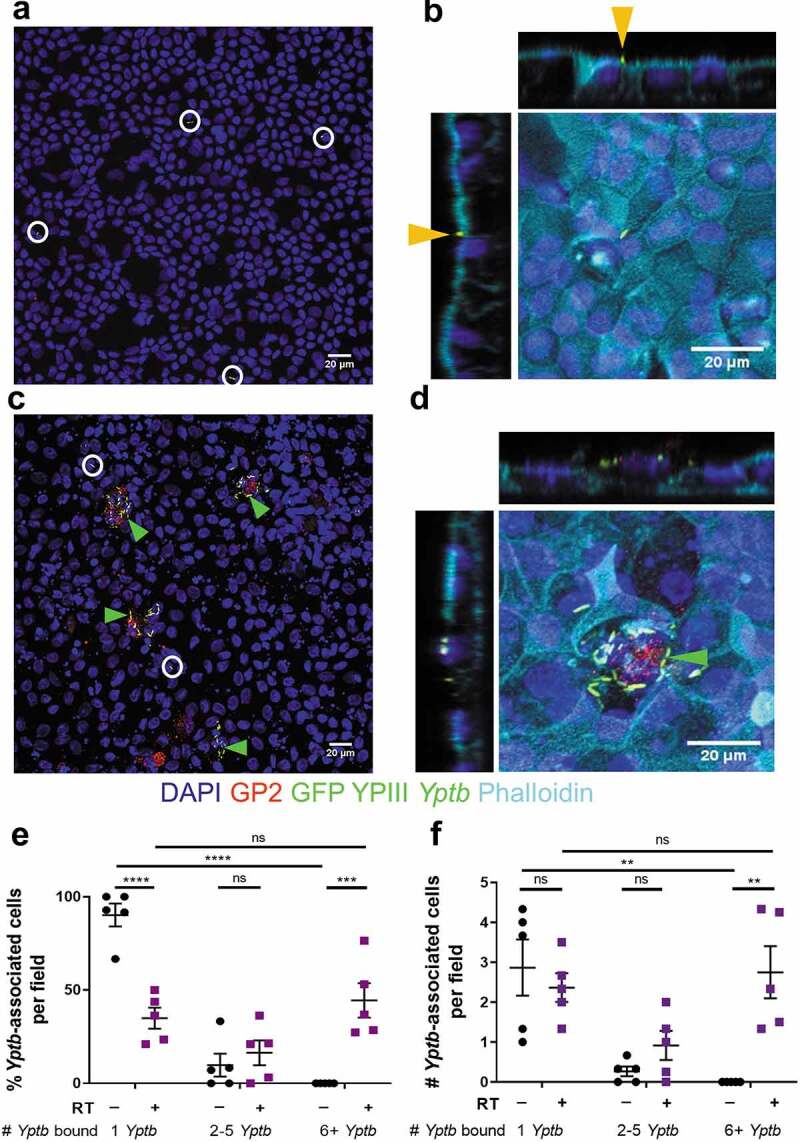Figure 1.

WT Yptb binds to enteroid-derived M cells in large numbers. HIE25 ileal monolayers were differentiated under (a-b) RT- or (c-d) RT+ conditions (200 ng/ml RANKL and 50 ng/ml TNFα). Monolayers were infected for 5 hours with 5 × 106 CFU WT YPIII Yptb expressing GFP (green) and stained with anti-GP2 antibody (M cells-red), DAPI (nuclei-blue), and phalloidin (F-actin-cyan). XY planes are maximum intensity projections. White circles/Orange arrows denote a single bacterium. Green arrows denote multiple Yptb. (b, d) Orthogonal XZ and YZ planes are shown. (e) The percentage of Yptb-associated cells per field was plotted according to the number of Yptb (1, 2–5, or 6+) bound to a cell. Each field is 1/320 of a Transwell. (f) The number of Yptb-associated cells per field was plotted according to the number of Yptb (1, 2–5, or 6+) bound to a cell. (e-f) Data were pooled from 3+ independent experiments with 2–4 fields analyzed per Transwell and averaged. Each symbol represents the average from one Transwell. Bars indicate mean and SEM. Statistical significance was determined using a two-way ANOVA with Tukey’s post hoc multiple comparison test
